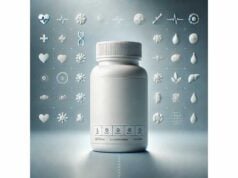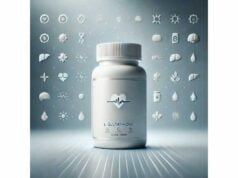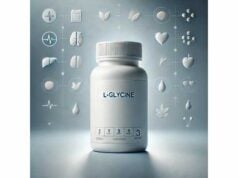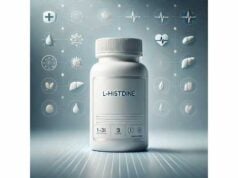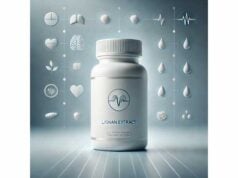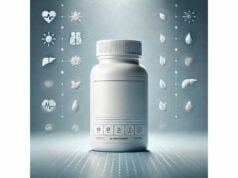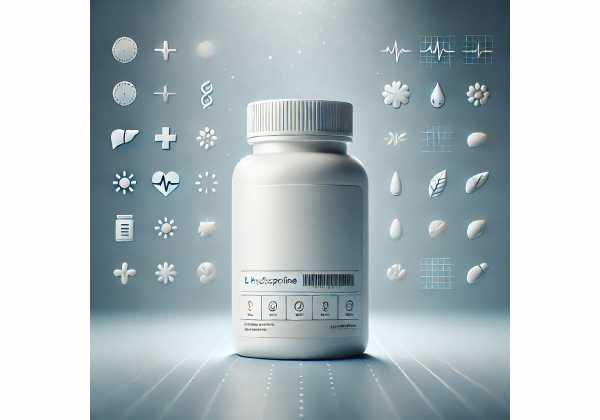
L-hydroxyproline (often shortened to “hydroxyproline”) is a collagen-specific amino acid that gives connective tissues—skin, tendons, cartilage, bone, and blood vessels—their tensile strength and resilience. Your body makes hydroxyproline from proline during collagen formation, a step that depends on vitamin C and oxygen. In supplements, hydroxyproline appears in two main forms: as free L-hydroxyproline and—far more commonly—as part of collagen peptides and gelatin. Interest in hydroxyproline spans beauty, joint care, recovery, and laboratory medicine (where it’s a biomarker of collagen turnover). Practical takeaways: it helps build and rebuild collagen, is well absorbed when consumed within small peptides, and—unlike stimulants—works on slow, structural timelines. Safety differs by dose and background risk: modest intakes look well tolerated in healthy adults, while high intakes can raise urinary oxalate, a consideration for people prone to kidney stones. This guide clarifies what hydroxyproline does, where the evidence sits today, how to use it (or get it from collagen peptides) for common goals, and when to avoid or adjust.
Key Insights
- Supports collagen structure and remodeling; hydroxyproline-containing peptides are measurable in blood after collagen intake.
- Benefits show up gradually (weeks), especially for skin hydration, elasticity, and recovery when total protein is adequate.
- Typical supplemental range: 0.5–2 g/day from free L-hydroxyproline or as part of 5–15 g/day collagen peptides; avoid high standalone doses.
- High intakes can increase urinary oxalate; use caution with kidney stone history or primary hyperoxaluria.
- Avoid during pregnancy, breastfeeding, and with significant kidney or liver disease unless advised by a clinician.
Table of Contents
- What is L-hydroxyproline and how it works
- Evidence-backed benefits you can expect
- Who benefits most and who should avoid it
- How to take L-hydroxyproline day to day
- How much hydroxyproline per day? Dosage by goal
- Side effects, interactions, and safety checklist
What is L-hydroxyproline and how it works
Hydroxyproline is a collagen-specific amino acid formed when enzymes (prolyl-4-hydroxylases) add a hydroxyl group to proline in procollagen. This small chemical edit has outsized consequences: it stabilizes collagen’s triple helix, helping fibrils resist stretch and shear. Although you can consume hydroxyproline directly as a supplement, most people encounter it through collagen peptides or gelatin, where it accounts for a notable share of total amino acids. In the lab, hydroxyproline is often used to estimate collagen content in tissues because it is uncommon in non-collagen proteins.
Absorption and distribution.
When you ingest collagen peptides, hydroxyproline-containing di- and tripeptides (such as Pro-Hyp and Hyp-Gly) appear in the bloodstream within an hour and can linger several hours. These small peptides are believed to act as messenger molecules, nudging fibroblasts (cells that make collagen) toward repair programs and influencing hyaluronic acid production and dermal matrix turnover. Free L-hydroxyproline is also absorbed, but it lacks the peptide “message” and may follow different metabolic fates.
Metabolic fate and oxalate link.
Hydroxyproline is catabolized primarily in the liver and kidney to intermediates that can generate glyoxylate; glyoxylate is quickly converted to oxalate if not detoxified. In healthy people at routine intakes, this pathway is well buffered. At high intakes or in certain genetic or renal contexts, more hydroxyproline can mean more urinary oxalate, a contributor to calcium-oxalate kidney stones.
What hydroxyproline is—and isn’t.
It is a structural and signal-like input for connective tissue maintenance. It is not a stimulant, sedative, or quick fix for pain. Benefits accrue through weeks to months of consistent intake alongside adequate dietary protein, vitamin C, sleep, and smart loading (resistance training for joints/tendons, photoprotection for skin).
Evidence-backed benefits you can expect
1) Skin hydration, elasticity, and fine lines (via collagen peptides).
Randomized trials of oral collagen peptides—naturally rich in hydroxyproline—show improvements in skin moisture, elasticity, and roughness/wrinkles after 8–12 weeks. Blood analyses following collagen intake detect hydroxyproline-containing peptides that persist for hours, supporting a plausible mechanism: these peptides reach the dermis, stimulate fibroblasts, and tilt remodeling toward a more hydrated, resilient matrix. Visible changes remain modest and incremental: think subtler dryness, makeup that sits better, and a small gain in bounce or firmness, not an overnight transformation.
2) Tendon, joint, and connective tissue support (adjunct).
Hydroxyproline is fundamental to collagen’s tensile strength. Programs pairing collagen peptides (5–15 g/day) with vitamin C and progressive loading (e.g., slow, heavy resistance for tendons or structured rehab for joints) can improve discomfort and function over 8–12 weeks. Mechanistically, providing collagen-specific amino acids—including hydroxyproline—plus load-driven mechanotransduction helps tissues lay down better-organized collagen. Free L-hydroxyproline can contribute, but peptides appear to be the more studied, practical vehicle.
3) Recovery and general tissue maintenance.
Athletes and active individuals may benefit from collagen-rich protocols around training blocks, particularly when connective tissue stress is high (plyometrics, running, change of direction). Hydroxyproline-containing peptides provide raw material and short-lived signaling that aligns with the repair window after loading sessions. Expect benefits in durability and perceived recovery, not necessarily in acute strength or endurance metrics.
4) Biomarker and metabolic insights (caveat: not a “benefit”).
Urinary and plasma hydroxyproline levels often reflect collagen turnover and can be used in research or clinical monitoring. Higher hydroxyproline intake—especially as free amino acid or large gelatin loads—can raise urinary oxalate in some settings. That matters less for most healthy adults at dietary doses but becomes relevant for anyone with kidney stones or primary hyperoxaluria.
5) Healthy-aging context (emerging).
Because collagen integrity declines with age, providing collagen-specific amino acids—including hydroxyproline—may help counter dermal thinning, joint cartilage wear, and tendon stiffness when paired with evidence-based training, protein sufficiency, and micronutrients. Here, hydroxyproline is the structural enabler within a broader program, not a standalone strategy.
Timelines to notice changes.
- Skin: 8–12 weeks, with earlier hydration changes for some.
- Joints/tendons: 8–12+ weeks with loading protocols.
- Recovery feel: within 2–4 weeks during heavy training cycles.
Who benefits most and who should avoid it
Most likely to benefit
- Adults seeking skin support who will commit to 8–12 weeks of daily intake and basic skincare (hydration, sunscreen).
- Athletes and active individuals in tendon-heavy sports or during higher-impact training, especially if total protein has been marginal.
- People with low collagen foods in their diet (little connective tissue, skin, bone-in cuts) who want a practical way to add collagen-specific amino acids.
Useful as an adjunct—not a cure
- Joint discomfort or overuse injuries under clinician or physio guidance. Hydroxyproline-rich peptides can complement progressive loading, sleep, and inflammation management.
- Post-procedure or rehabilitation contexts. When tissue remodeling is a goal, collagen peptides with vitamin C plus adequate protein are logical add-ons.
Who should avoid or get medical advice first
- History of calcium-oxalate kidney stones or primary hyperoxaluria. High hydroxyproline loads can raise urinary oxalate; even moderate intakes deserve a personalized plan (hydration, citrate intake, diet review, clinician oversight).
- Chronic kidney disease or significant liver disease. Altered amino acid handling and oxalate metabolism warrant specialist guidance.
- Pregnant or breastfeeding individuals. Data for standalone L-hydroxyproline are limited; avoid unless recommended by your clinician.
- Children. Outside of specific clinical indications, do not supplement without pediatric oversight.
- Strict low-oxalate diets or post-stone surgery protocols. Coordinate with your healthcare team before adding hydroxyproline or collagen concentrates.
Allergy and intolerance notes
- True hydroxyproline allergy is exceedingly rare. Gelatin or fish-based collagen can trigger reactions in sensitive individuals; check sources (bovine, porcine, marine) and avoid known allergens.
How to take L-hydroxyproline day to day
Choose your format wisely
- Collagen peptides (most practical): Typically 5–15 g/day, dissolved in water, coffee, or smoothies; deliver hydroxyproline within small peptides (e.g., Pro-Hyp, Hyp-Gly) that circulate after ingestion.
- Gelatin: Similar amino acid spectrum; useful in cooking (jellies, gummies).
- Free L-hydroxyproline: Capsules or powder; easier for “pure” titration but lacks the di-/tripeptide signal and can more directly influence oxalate metabolism at higher doses.
Timing by goal
- Skin: Any time of day; consistency beats timing. Pair with 75–100 mg vitamin C from food or supplement to support collagen cross-linking.
- Tendon/joint support: Many protocols take collagen peptides 30–60 minutes before rehab or training to align peptide peaks with the early repair window.
- Recovery and maintenance: Daily intake with meals for adherence; if using free L-hydroxyproline, split doses to improve tolerance.
Stacking examples
- Skin texture and hydration: Collagen peptides 10 g/day + vitamin C 100 mg/day + photoprotection and moisturizers; evaluate at 12 weeks.
- Tendon program: Collagen peptides 15 g 45 minutes pre-session + citrus or vitamin C 100 mg + eccentric loading or heavy-slow resistance protocol 3x/week, 8–12 weeks minimum.
- Low-oxalate caution build: If stone-prone yet cleared to try collagen peptides, start low (5 g/day), maintain high fluid intake, and monitor urinary parameters with your clinician.
Adherence and mixing tips
- Collagen peptides dissolve in hot or cold liquids; minimal taste/smell.
- Free L-hydroxyproline has a mild taste; capsules help if flavor is an issue.
- For travel, single-serve stick packs or small sachets prevent dose drift.
Signals it is helping
- Skin: Less dryness/tightness, subtle elasticity changes, small wrinkle softening on close inspection or photography.
- Joints/tendons: Better tolerance to volume or intensity, fewer next-day “pinch” sensations, improved function scores from your therapist.
- Recovery: Perceived resilience during dense training blocks, steadier soft-tissue feel.
How much hydroxyproline per day? Dosage by goal
Everyday support (food-first)
- Most people can meet needs by eating adequate protein and, if desired, adding collagen peptides 5–10 g/day. This supplies hundreds of milligrams of hydroxyproline within peptides—enough to support routine remodeling without pushing oxalate pathways.
Skin and beauty programs
- Collagen peptides 10 g/day for 8–12 weeks is a common clinical-trial template. This delivers hydroxyproline-rich peptides while minimizing free hydroxyproline spikes. Continue if benefits are noticeable and budget allows.
Tendon and joint support
- Collagen peptides 10–15 g/day for 12+ weeks, taken 30–60 minutes before rehab or loading sessions. Keep vitamin C intake consistent. Combine with a structured program from a physio or coach.
Using free L-hydroxyproline (if you choose this route)
- Conservative range: 0.5–1 g/day, split with meals. This aligns with everyday support while keeping oxalate risk low in healthy adults.
- Upper short-term range: Up to 2 g/day has been studied in healthy volunteers; however, 2 g/day may increase urinary oxalate in some people. If you approach this level, do so with hydration, clinician input, and outcome monitoring (urine oxalate where relevant).
- Avoid high standalone doses. Very large loads (e.g., high-gelatin boluses or multi-gram free hydroxyproline) are more likely to raise urinary oxalate and are unnecessary for most wellness goals.
Cycling and duration
- Skin: 12-week blocks, then reassess; many maintain at 5–10 g/day collagen peptides.
- Tendons/joints: Run cycles aligned with rehab and training seasons (12–16 weeks), then taper to 5–10 g/day or pause.
- General maintenance: If you feel better on it, use lowest effective dose and take periodic breaks.
Special populations
- Kidney stone history or primary hyperoxaluria: Emphasize dietary protein balance, hydration, and clinician-guided choices; avoid free L-hydroxyproline and large gelatin/collagen boluses unless explicitly cleared.
- Pregnancy/breastfeeding, CKD, significant liver disease: Do not self-supplement; seek individualized guidance.
Side effects, interactions, and safety checklist
Common tolerability profile
- Collagen peptides and modest hydroxyproline intakes are generally well tolerated. Occasional GI symptoms (fullness, mild nausea, loose stools) usually resolve by splitting doses, taking with food, or reducing total intake.
Oxalate and kidney-stone considerations
- Hydroxyproline catabolism can generate glyoxylate → oxalate. Higher loads—especially large gelatin boluses or ≥2 g/day of free L-hydroxyproline—have been associated with increased urinary oxalate in some healthy adults.
- If you have a history of calcium-oxalate stones, prioritize clinician-guided plans: ensure high fluid intake, consider citrate-rich foods, avoid mega-doses, and prefer small, peptide-based servings over free-form spikes.
Liver and kidney disease
- Because hydroxyproline is metabolized in liver and kidney, those with chronic kidney disease or significant hepatic impairment must avoid unsupervised use. Amino acid loads and oxalate handling differ in these populations.
Drug and supplement interactions
- No major direct drug interactions are widely recognized at typical wellness doses. Indirect issues can arise if you combine very high hydroxyproline loads with low calcium intake, very high vitamin C, or extreme low-carb diets that alter oxalate handling. The safest course is moderation and balanced meals.
Quality and sourcing
- Choose third-party-tested products (NSF, USP, Informed Choice) when possible. For collagen, confirm source (bovine, porcine, marine) to align with dietary or allergy needs. Pure L-hydroxyproline products should list L-hydroxyproline as the active ingredient without unnecessary additives.
When to stop and seek care
- New or worsening flank pain, visible blood in urine, severe GI distress, rash or swelling, or any unexpected symptoms after starting supplementation.
- If you’re stone-prone and notice signs of recurrence, stop the supplement and contact your clinician.
Bottom line on safety
- For most healthy adults, collagen peptides (5–15 g/day)—delivering hydroxyproline within peptides—strike the best balance of efficacy, practicality, and safety. Reserve free L-hydroxyproline for narrow use cases, keep doses modest (0.5–1 g/day, split), and avoid high standalone dosing—especially with any kidney-stone risk.
References
- Hydroxyproline ingestion and urinary oxalate and glycolate excretion 2006 (Human study)
- Hydroxyproline Metabolism and Oxalate Synthesis in Primary Hyperoxaluria 2018 (Isotope-tracing human study)
- A single-blind, parallel trial of L-hydroxyproline in healthy adult subjects 2015 (Human trial)
- Identification of a highly stable bioactive 3-hydroxyproline-containing tripeptide in human blood after collagen hydrolysate ingestion 2022 (Human study)
- Hydroxyproline Metabolism and Oxalate Synthesis in Primary Hyperoxaluria 2018 (Open-access version)
Medical Disclaimer
This guide is educational and does not replace personalized medical advice, diagnosis, or treatment. Talk with a qualified healthcare professional before starting any new supplement—especially if you are pregnant or breastfeeding, have kidney stones or chronic kidney disease, significant liver disease, or a history of primary hyperoxaluria. If you experience adverse effects, stop the supplement and seek medical care.
If you found this article helpful, please consider sharing it on Facebook, X (formerly Twitter), or your favorite platform, and follow us for more evidence-informed wellness guides. Your support helps us keep producing high-quality, people-first content.

